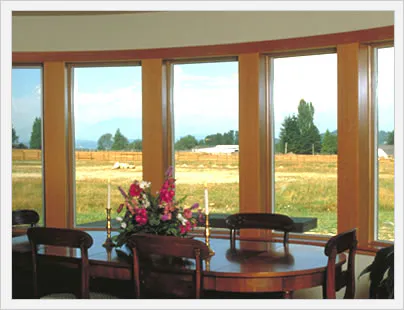Window STC Ratings
There are a number of steps that a manufacturer can take to increase the STC rating of a replacement window. The single most important of which is to increase the air gap between the two panes of glass.
Having 3 to 4 inches between the glass (instead of the standard 2 to 3 inches) helps to greatly deaden the amount of sound that is able to enter through the window. Other steps include different glass thicknesses and high quality seals and components.


